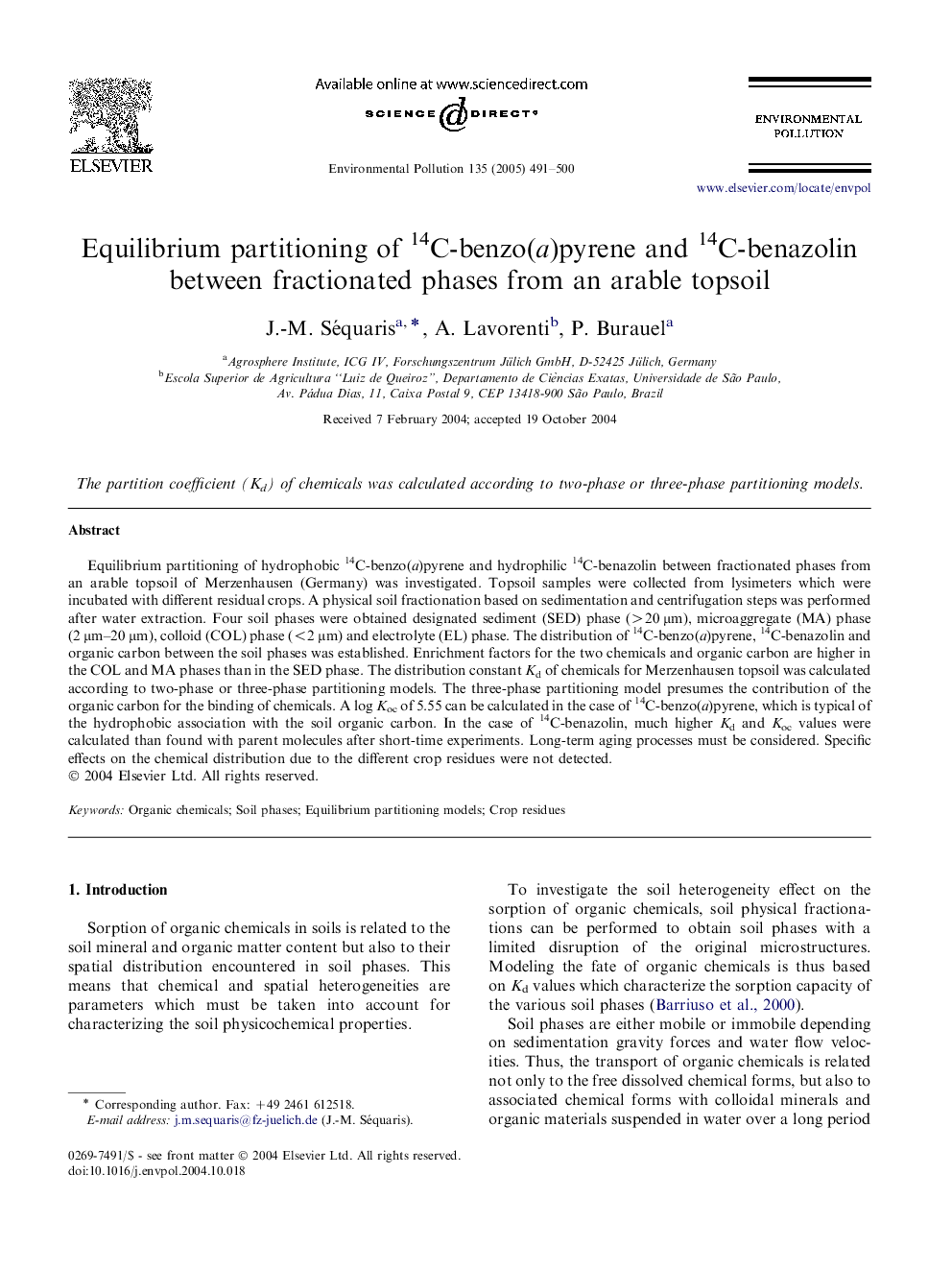| Article ID | Journal | Published Year | Pages | File Type |
|---|---|---|---|---|
| 9456393 | Environmental Pollution | 2005 | 10 Pages |
Abstract
Equilibrium partitioning of hydrophobic 14C-benzo(a)pyrene and hydrophilic 14C-benazolin between fractionated phases from an arable topsoil of Merzenhausen (Germany) was investigated. Topsoil samples were collected from lysimeters which were incubated with different residual crops. A physical soil fractionation based on sedimentation and centrifugation steps was performed after water extraction. Four soil phases were obtained designated sediment (SED) phase (>20 μm), microaggregate (MA) phase (2 μm-20 μm), colloid (COL) phase (<2 μm) and electrolyte (EL) phase. The distribution of 14C-benzo(a)pyrene, 14C-benazolin and organic carbon between the soil phases was established. Enrichment factors for the two chemicals and organic carbon are higher in the COL and MA phases than in the SED phase. The distribution constant Kd of chemicals for Merzenhausen topsoil was calculated according to two-phase or three-phase partitioning models. The three-phase partitioning model presumes the contribution of the organic carbon for the binding of chemicals. A log Koc of 5.55 can be calculated in the case of 14C-benzo(a)pyrene, which is typical of the hydrophobic association with the soil organic carbon. In the case of 14C-benazolin, much higher Kd and Koc values were calculated than found with parent molecules after short-time experiments. Long-term aging processes must be considered. Specific effects on the chemical distribution due to the different crop residues were not detected.
Keywords
Related Topics
Life Sciences
Environmental Science
Environmental Chemistry
Authors
J.-M. Séquaris, A. Lavorenti, P. Burauel,
